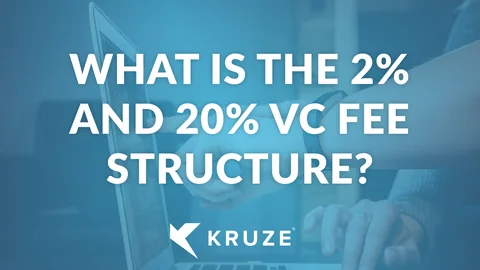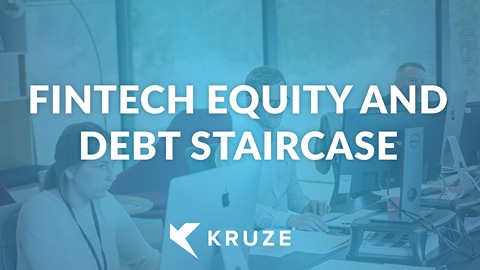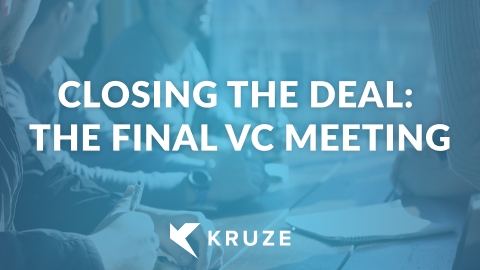
At its most basic, the two and twenty is basically the standard fee structure for venture capital firms to charge their investors. The 2% is the annual fee that the fund charges investors to manage the fund. And the 20% is the percentage of the upside that the fund managers take.
What does that mean? We will break it down.
The 2% of the two and twenty
The two, or 2%, of the fee structure, stands for management fees applied against the value of the fund every year.
Particularly, in the first five years of a fund, there is a 2% management fee – this is the active investing period of the fund.
The investors are able to charge their limited partners (the investors in the fund) 2% annually on the value of the fund.
For instance, if you have a $100 million fund, that works out to $2 million in fees every year.
VC firms are able to charge in order to pay all the partners, the support people, the legal costs, and fund administration expenses.
Keep in mind that the 2% management fee is typically over the active investment period, usually the first five years. Then, that fee starts stepping down, typically 25 basis points per year.
So a few years after the investing period, it will decrease to 1.5% and then 1% as the fund ages.
The logic being that as the fund ages there’s not as much work, and not as many people who need to be paid to run the fund.
The 20% of the two and twenty
The twenty, or 20%, of the fee structure applies to the profit sharing. This is better known as “carry” in the industry.
Once the general partners distribute capital back to all the investors, they get 100% of their money back.
Every dollar after that there is a profit-sharing component. The VC general partners can charge the limited partners a standard 20%.
For instance, if you have a $100 million fund and you deliver an additional $100 million of profit, you return $200 million to your investors. And 20% of that extra $100 million is going to go back to the general partners as profit.
That means you’re actually returning $80 million to the investors, and the general partners are able to split $20 million of profits.
VC motivation goes beyond return
If a VC fund is doing well and making good investments, they’re seeing profit participation or carry that is very attractive. It’s why most people are working on a VC fund.
While they could make a lot of money in some other positions in management positions at startups or public companies, the profit share or carry is what gets them out of bed and working very hard every day.
The best VCs are intrinsically motivated people and want to ultimately change the world.
So while money doesn’t motivate them 100% it’s certainly a nice incentive.
The 3% and 30% fee structure
While the two and twenty are the industry standard on VC fees, there are firms with a track record of making great investments and have tons of limited partners that want to invest that are able to charge more.
Those firms charge a 3% management fee and 30% of profits.
At the very, very high end, there are different incentive structures on the carry that can deliver even higher returns to the general partners. Or, for smaller or micro-funds, like pre-seed funds, there could be fee structures that deliver a higher percentage of management fee early on in the fund’s life to help the managers cover the firm’s expenses on a lower asset base.
Small VC Funds: Unique Behaviors and Challenges
Small VC funds, often dealing with a lower management fee, can exhibit different behaviors compared to larger funds. With limited resources, these funds are more focused on optimizing their investments and ensuring the success of each portfolio company. The lower management fee means they must operate efficiently, often leading to a hands-on approach with their investments.
High Fees and Limited Partnership
Small VC funds typically charge lower management fees, which can affect their ability to cover operational costs and invest in high-quality support for their portfolio companies. This necessitates a more judicious use of resources, and fund managers often wear multiple hats to manage expenses. Despite these challenges, the limited partnership structure ensures that both the general partners and limited partners are aligned in their goals of achieving high returns.
Strategic Focus on Portfolio Companies
Due to their constrained budgets, small VC funds prioritize strategic investments and provide tailored support to each portfolio company. This close involvement helps nurture startups, ensuring they grow and succeed, which ultimately benefits the fund’s performance. Small VC funds may not have the luxury to spread their investments thin, making each decision critical to the fund’s success.
Navigating High Fees in the Industry
While small VC funds may struggle with lower management fees, they are acutely aware of the high fees charged by larger funds in the industry. This awareness drives them to differentiate themselves by offering more value to their portfolio companies through mentorship, industry connections, and specialized support. By focusing on delivering significant value without imposing high fees, small VC funds can attract promising startups looking for dedicated and resourceful investors.
Additional Insights on Fund Management
Understanding the intricacies of fund management is crucial for both fund managers and investors. The compensation structure, often referred to as the 2% and 20% fee structure, is designed to align the interests of the fund managers with those of the investors. The management fees, typically 2% of the committed capital, cover the operational expenses of the fund, including salaries, legal fees, and administration fees.
In the hedge fund industry, the performance fee, also known as carried interest, is a significant component of the compensation structure. Hedge fund managers often charge a performance fee of 20% on the fund’s profits, incentivizing them to achieve high returns. This fee structure is prevalent not only in hedge funds but also in venture capital funds and private equity.
Fund managers must also consider the tax implications of their compensation. Carried interest is typically taxed as capital gains, which is lower than ordinary income tax rates. However, management fees are considered ordinary income and are taxed accordingly.
The hedge fund industry has seen a rise in the number of hedge funds and venture capital funds, each with its unique fee structure. Some funds charge higher management fees and performance fees, especially those with a proven track record of successful investments. For instance, some hedge funds charge a 3% management fee and a 30% performance fee, deviating from the traditional 2% and 20% structure.
Investors, including pension funds and private equity firms, are increasingly scrutinizing the fee structures of the funds they invest in. They seek transparency in how the management fees and performance fees are calculated and the overall impact on their portfolio returns.
In conclusion, the fee structure of a fund, whether it’s a hedge fund, venture capital fund, or private equity, plays a crucial role in the fund’s performance and the compensation of the fund managers. Understanding these fees, including the management fee, performance fee, and carried interest, is essential for both fund managers and investors to make informed investment decisions.
Two and twenty is definitely a term that you’ll hear quite a bit if you know a venture capitalist or limited partners.
If you have any questions on startup venture capital funding, please contact us.















